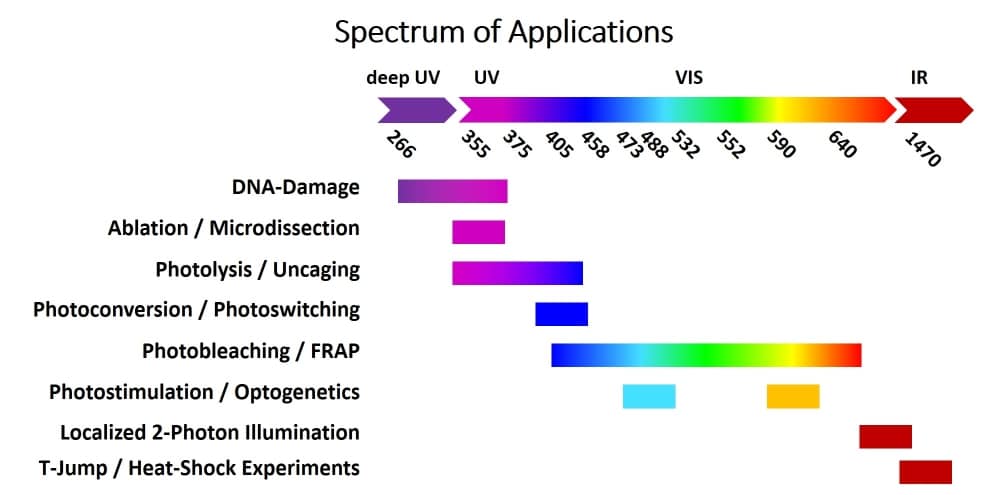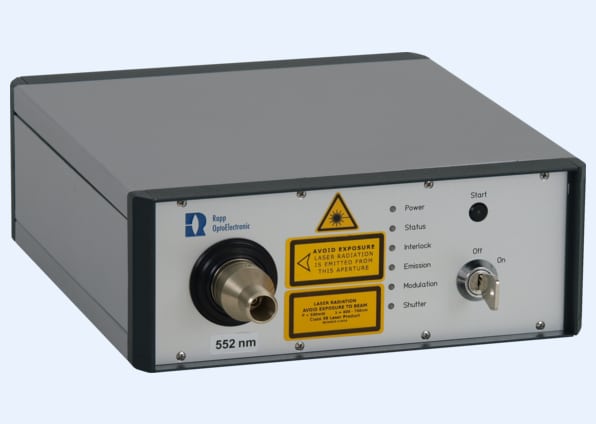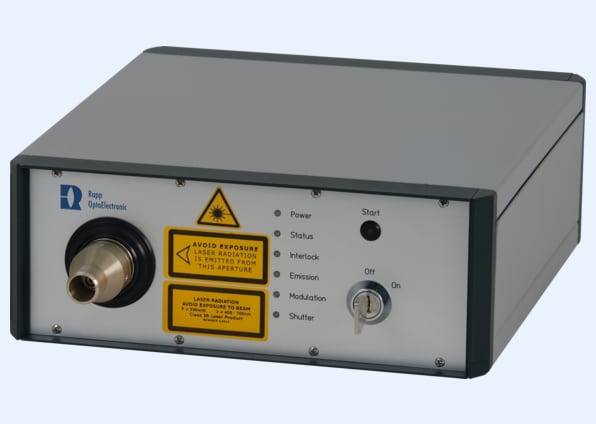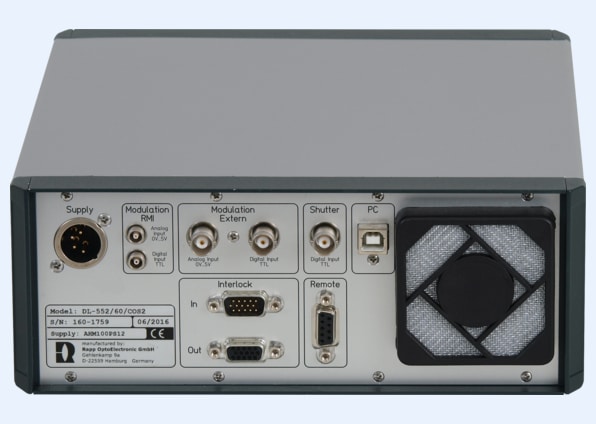Single Line Laser
Continuous Wave or Pulsed Laser Systems
The single line laser light sources are specially designed to be used with our photomanipulation devices of the UGA‑42 series or other imaging devices of Rapp OptoElectronic implemented in our SysCon software. Based on your application, you can choose between continuous wave or pulsed laser light sources, different wavelengths and power outputs. Each laser system includes a built-in mechanical shutter and an interlock circuit. Furthermore, all laser light sources can be modulated via the SysCon software enabling the entire functionality of the laser light source. Triggering by external devices gives you the possibility to use these laser systems stand-alone as well.
Features
Applications

Further Applications:
- Photoactivation/ Photoinhibition
- Photoexcitation
Specifications
Literature








